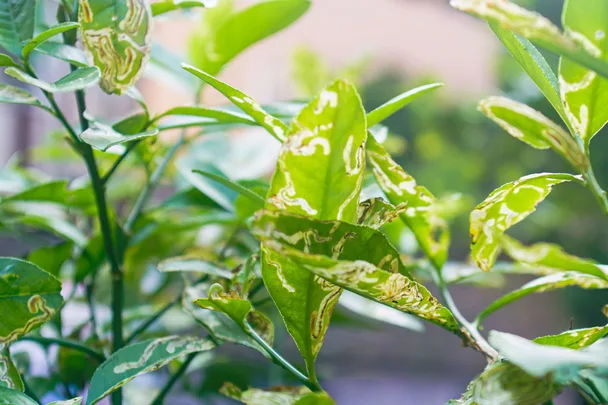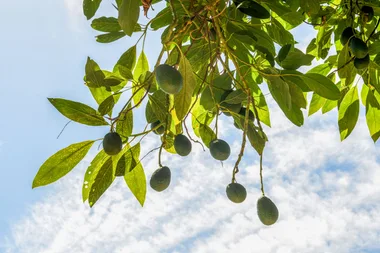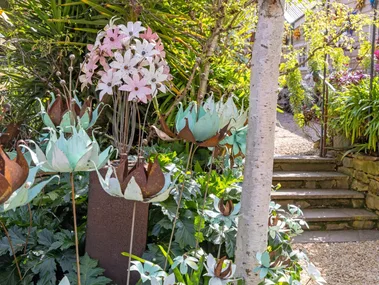The citrus leaf miner or leafminer (Phyllocnistis citrella) is a persistent garden pest that returns yearly to lay its eggs on citrus tree leaves. Signs of an infestation of leafminers on citrus trees include curled leaves, yellow or browned areas and visible eggs or larvae.
When it comes to controlling citrus leaf miners, prevention is the key. It’s tough to eradicate once the moth has burrowed its way inside the leaf. The good news is that citrus leaf miners won’t kill your tree and will still produce fruit. However, the damage can depend on how mature your citrus tree is.
The common mistake that can lead to citrus leaf miner issues
Kevin Parker is a senior horticulturist at The Greenery Garden and Home. He says many people make the mistake of waiting until leafminers are visible before doing something about it.
“The biggest mistake people make is spraying too late in the season. We all wait until we see them [citrus leaf miners] to do something about it. But by that stage, it’s too late,” says Kevin.
How to get rid of citrus leaf miner
If citrus leaf miner has made its way inside the leaves of your healthy citrus tree, there are a couple of things you can try.
1. Prune away damaged leaves: Applying oil to the leaves will not kill the larvae, so it’s essential to remove the infested leaves, disposing of them carefully to break the life cycle.
2. Yates Success Ultra Insect Control spray: “It’s absorbed into the leaf, and it can affect the larvae when they’re there,” says Kevin.

How to identify citrus leaf miner
The citrus leaf miner is a nocturnal moth with a wingspan of only five millimetres. But when it lays eggs on the leaves of citrus trees, it can cause visible damage.
“In the springtime, when the plant produces all the new leaves, the moth lays eggs on the leaves. From the egg, a little worm, called larvae, hatches out and burrows into the leaf,” explains Kevin.
When the larvae are fully grown, they curl the leaf around for protection while pupating.
“It’s called leaf miner because it looks like it’s mining the leaf. You can see all these little translucent tunnels, and it can significantly damage the leaves,” adds Kevin.
When are citrus leaf miners most active?
In Australia, citrus leaf miners are most active during the warmer months, typically from spring to autumn. Their activity peaks during new growth on citrus trees, generally in spring and early summer.
This is when the adult moths lay their eggs on the tender foliage, and the larvae feed and create tunnels within the leaves. As temperatures cool down in autumn, their activity tends to decrease. However, some activity may continue throughout the year in warmer regions or during mild winters.
The key is to reduce leaf growth during late summer and autumn. This can be achieved by refraining from fertilising and excessive watering during these seasons.
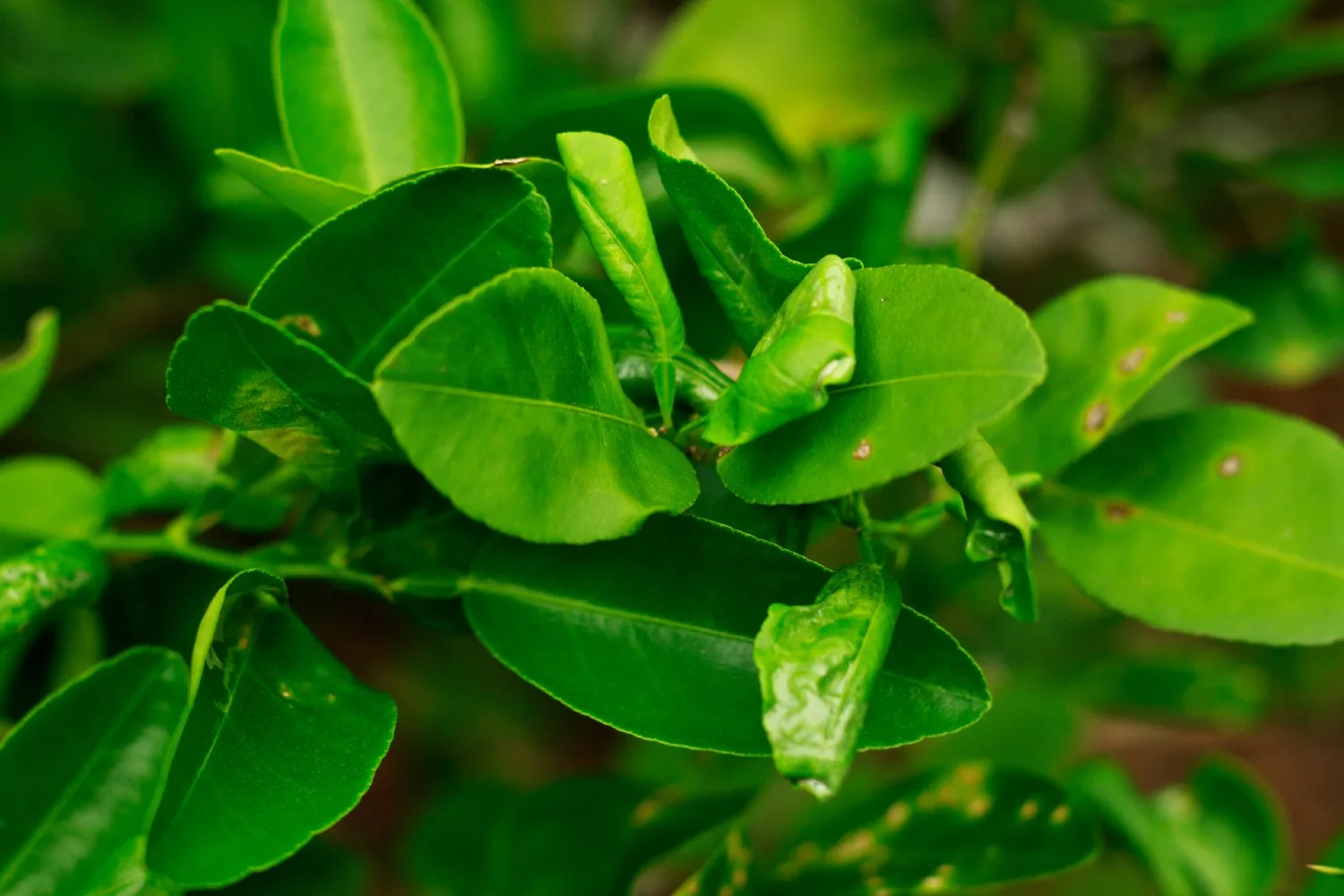
How to prevent citrus leafminer
The best way to control leaf miners is to prevent the larvae from burrowing into citrus plants.
1. Spray with an oil
The best time to spray citrus plants to prevent citrus leafminer is when new growth appears on the tree.
“You can’t control it [citrus leafminer] when you see it. You’ve got to spray preventively when new growth starts,” says Kevin.
To protect the new growth on your citrus plants, spray them with an oil-based spray, like white oil, eco-oil or neem oil.
“The way the oils work is they put a film over the leaf, and they prevent the moth from laying eggs on the leaves,” he explains.
Importantly, you can’t just spray the leaves once. It’s best to spray the leaves of your citrus tree with oil once a week when there’s new growth until the leaves get firmer.
“It might be once a week for, say, six weeks or so during that period,” says Kevin.
2. Pheromone traps
If you don’t want to use oils and sprays in your garden, try pheromone traps to get rid of citrus leafminer naturally.
“The male moth is drawn to the pheromone and gets stuck on the sticky trap. So you’re taking the male out of the equation, which means they can’t breed with the female, and then you’re less likely to get the larvae on the tree,” says Kevin.

How to dispose of infested citrus leaf miner leaves
The best way to dispose of citrus leaves infested with citrus leaf miners is to ensure they are destroyed effectively to prevent the spread of the pest. Here’s a suggested method:
- Prune the infested leaves: Carefully prune off the leaves from the citrus tree using sanitised pruning shears.
- Bag and seal: Place the pruned leaves into a sealable plastic or sturdy garbage bag. Seal the bag tightly to prevent any pests from escaping.
- Dispose properly: Dispose of the sealed bag in the trash. Avoid composting infested citrus leaves, as the heat generated in compost piles may not be sufficient to kill the citrus leaf miner larvae or pupae. Additionally, refrain from disposing of the infested leaves in green waste bins unless permitted by local regulations.
- Sanitise tools: After pruning, thoroughly clean and sanitize your pruning shears or any other tools used to prevent the spread of citrus leaf miner to other parts of the tree or nearby trees.
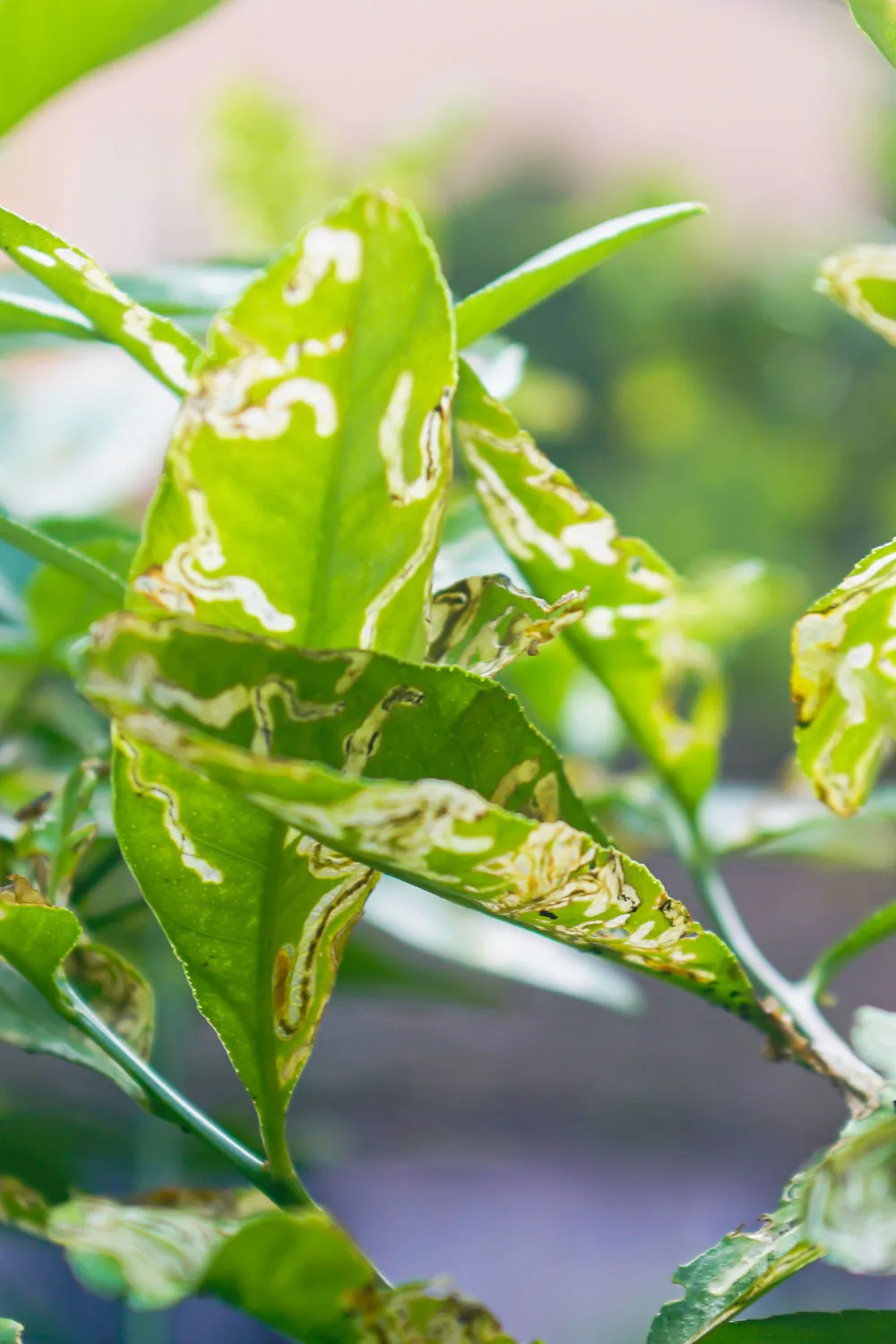
Natural predators of citrus leaf miner
Natural predators of citrus leaf miners include various insects and their larvae, such as parasitic wasps and lacewings. These predators often feed on citrus leaf miner eggs, larvae, or pupae, helping to control their populations in citrus orchards.
